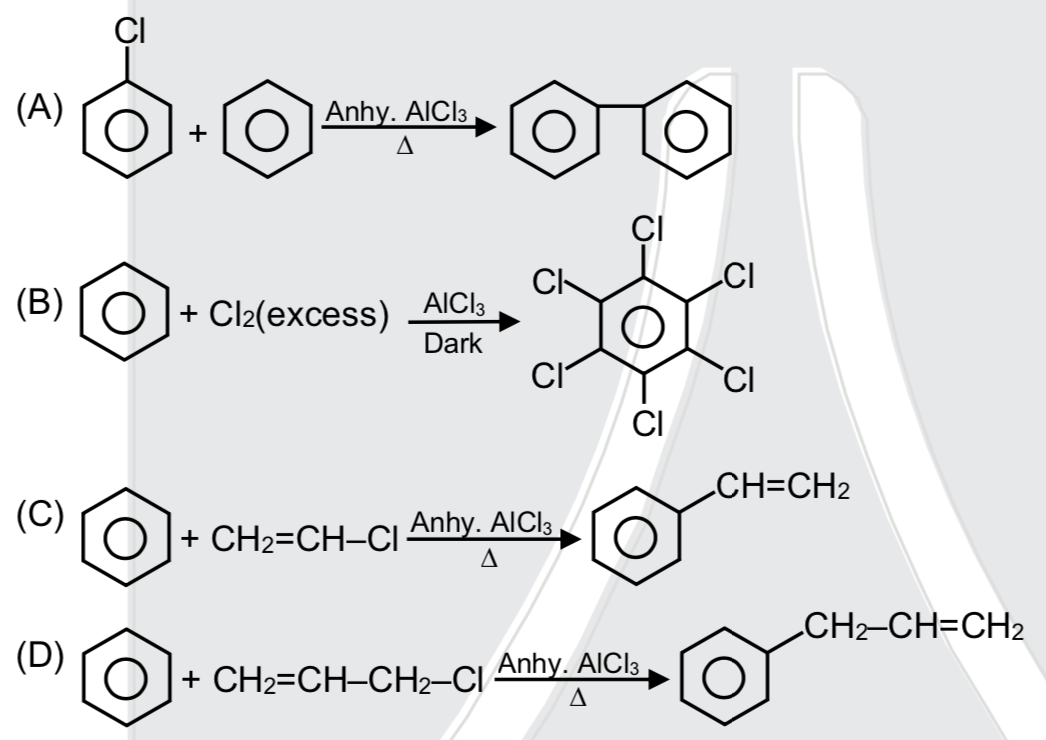In which element shielding effect is not possible ?
H
Be
B
N
The correct Answer is:A
To determine in which element the shielding effect is not possible, we need to understand what the shielding effect is and how it operates in atoms.
1. Define Shielding Effect:
The shielding effect refers to the phenomenon where inner shell electrons reduce the effective nuclear charge felt by outer shell electrons. This occurs because the inner electrons repel the outer electrons, decreasing the attraction between the nucleus and the outer electrons.
2. Identify the Requirement for Shielding:
For the shielding effect to occur, there must be inner shell electrons present in the atom. These inner shell electrons are responsible for shielding the outer electrons from the full effect of the nuclear charge.
3. Analyze the Given Elements:
- Hydrogen (H): Hydrogen has only one electron and no inner shell electrons. Therefore, there are no electrons to provide shielding.
- Beryllium (Be): Beryllium has four electrons, with two in the first shell and two in the second shell. The inner shell electrons can shield the outer electrons.
- Boron (B): Boron has five electrons, with two in the first shell and three in the second shell. The inner shell electrons can also shield the outer electrons.
- Nitrogen (N): Nitrogen has seven electrons, with two in the first shell and five in the second shell. Again, the inner shell electrons can shield the outer electrons.
4. Conclusion:
Since hydrogen is the only element listed that has no inner shell electrons, it is the only element where the shielding effect is not possible. Thus, the correct answer is Hydrogen (H).
Final Answer:
The element in which shielding effect is not possible is Hydrogen (H).
---
The shielding effect refers to the phenomenon where inner shell electrons reduce the effective nuclear charge felt by outer shell electrons. This occurs because the inner electrons repel the outer electrons, decreasing the attraction between the nucleus and the outer electrons.
For the shielding effect to occur, there must be inner shell electrons present in the atom. These inner shell electrons are responsible for shielding the outer electrons from the full effect of the nuclear charge.
- Hydrogen (H): Hydrogen has only one electron and no inner shell electrons. Therefore, there are no electrons to provide shielding.
- Beryllium (Be): Beryllium has four electrons, with two in the first shell and two in the second shell. The inner shell electrons can shield the outer electrons.
- Boron (B): Boron has five electrons, with two in the first shell and three in the second shell. The inner shell electrons can also shield the outer electrons.
- Nitrogen (N): Nitrogen has seven electrons, with two in the first shell and five in the second shell. Again, the inner shell electrons can shield the outer electrons.
Since hydrogen is the only element listed that has no inner shell electrons, it is the only element where the shielding effect is not possible. Thus, the correct answer is Hydrogen (H).
The element in which shielding effect is not possible is Hydrogen (H).
Topper's Solved these Questions
- PERIODIC TABLE & PERIODICITYBOOK - RESONANCE ENGLISHCHAPTER - PERIODIC TABLE & PERIODICITYEXERCISE - Exercise-3
1 Videos
- P-BLOCK ELEMENTS (HALOGEN & NOBLE GASES)BOOK - RESONANCE ENGLISHCHAPTER - P-BLOCK ELEMENTS (HALOGEN & NOBLE GASES)EXERCISE - APSP PART-3
22 Videos
- QUALITATIVE ANALYSISBOOK - RESONANCE ENGLISHCHAPTER - QUALITATIVE ANALYSISEXERCISE - INORGANIC CHMISTRY(Qualitative analysis)
35 Videos
Similar Questions
Which is possible
View SolutionFem shield is a
View SolutionIn which compound delocalization is not possible-
View SolutionWhich of the following reactions are possible ?

View SolutionWhich of the following reactions are possible ?

View SolutionIn group 14 , which element show inert pair effect ?
View SolutionWhich of the following arrangement is possible ?
View SolutionWhich of the following is not possible?
View SolutionWhich of the following effects are possible in ortho nitrophenol
View SolutionIn which element the electrons will be experiencing the highest effective nuclear charge ? The elements are Be, B, C, N & O.
View Solution
